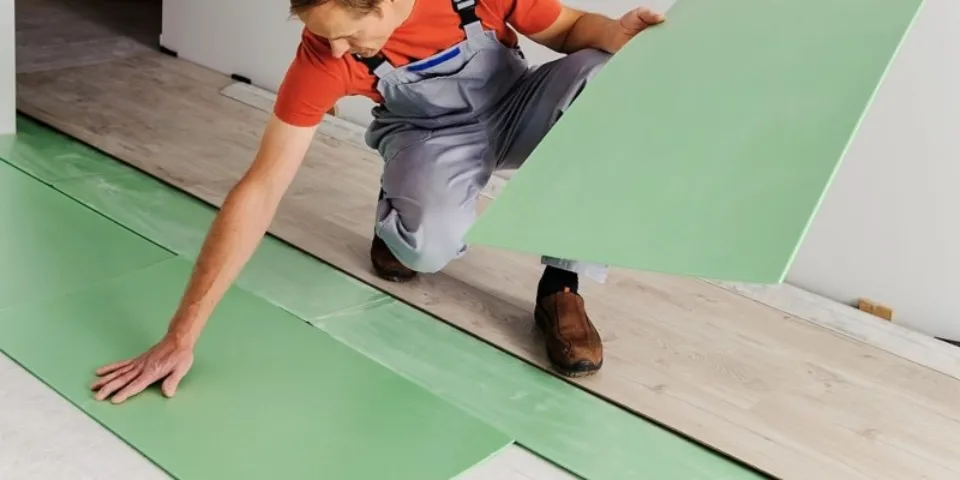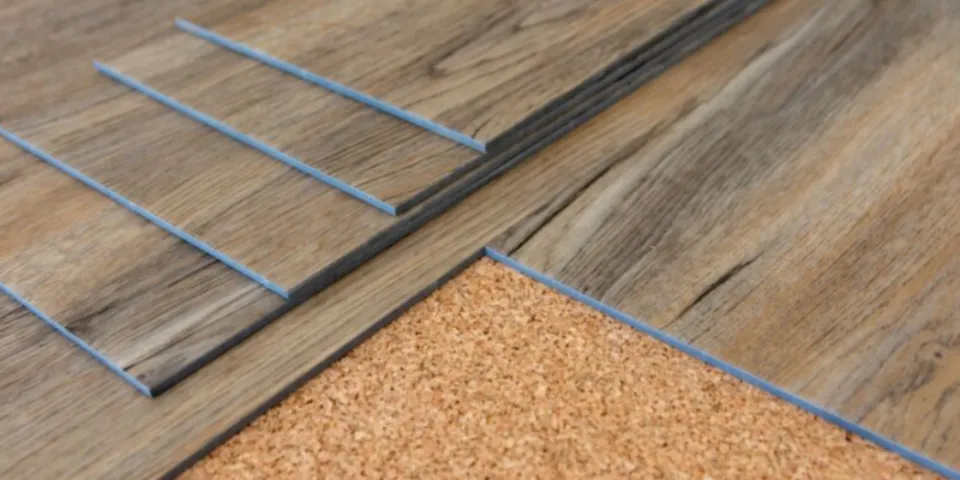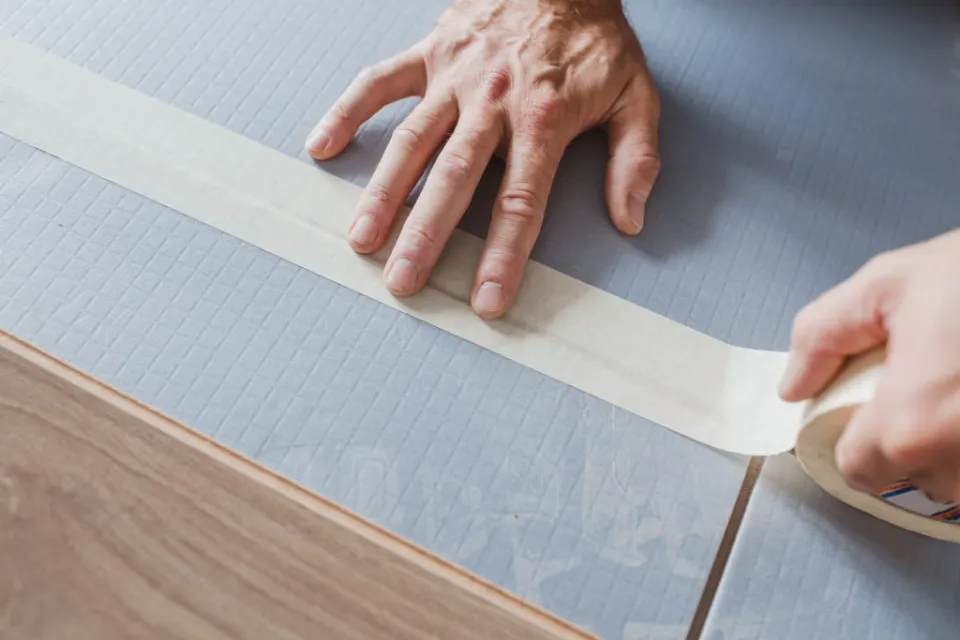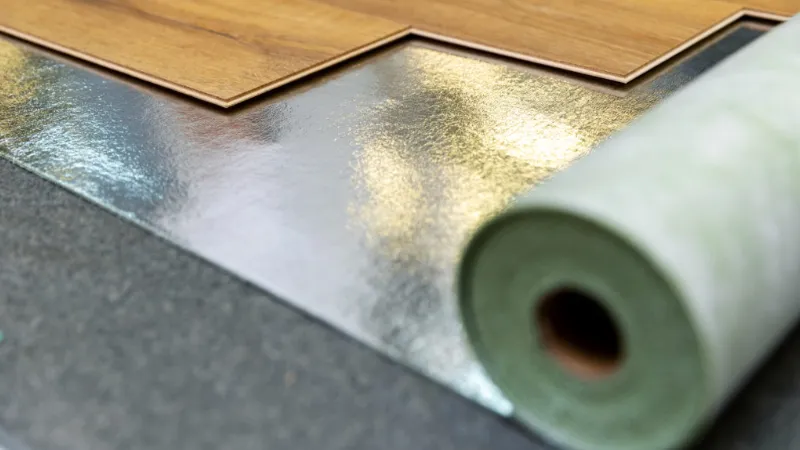An underlayment is a great addition to any flooring project, and that is the truth. But really, do you need underlayment for vinyl plank flooring?
Yes, a vinyl plank floor may need an underlayment. Discover why as you continue reading. Keep reading.
How to Know If You Need An Underlayment?
It’s critical to comprehend the type of your subfloor and the function you want the underlayment to perform before you install your vinyl planks. In addition, you ought to ask yourself these questions:
- Is the condition of your subfloor satisfactory?
- Does it have a smooth surface and no dings, bumps, or other imperfections?
- Is it dust-free and spotless?
If your subfloor is damaged, dirty, or full of bumps and you think that repairing, cleaning, or sanding it would be a lot of work, then it’s best to use an underlayment.
Also, think about the type of subfloor you have. If you are laying your vinyl planks on a concrete subfloor, an underlayment would be necessary, first, because it will offer extra cushion, and second, because it will act as a moisture barrier and keep water vapor out of the planks. An underlayment will also help keep your new flooring warmer when the cold weather sets in.
You won’t need to worry about shielding your vinyl planks from water vapor if you are installing over a hardwood floor, but you might still want to get an underlayment for added security or sound absorption.
When putting down the planks over linoleum or tile, the same holds true. The majority of the time, moisture won’t be a problem, but an underlayment will help make the new flooring soundproof while also adding a layer of cushion.
Additionally, bear in mind that some condominium buildings and Homeowner Associations might actually insist that you have sound-absorbing flooring installed.
Therefore, underlayment is necessary for vinyl plank flooring. If you are in the market for this flooring type, you may as well start looking up prices for different types of underlayments.

When Does An Underlayment Help?
If your brand of vinyl planks recommends using an underlayment, please do so, as not using it can result in issues during or after the installation. For instance, a lack of underlayment can make the flooring perform poorly or not last as long as it should.
Most homeowners who opt not to use the advised underlayment regret it because the floor frequently starts to “clap.” Even a one-millimeter difference in height along the length of the plank can cause this sound to occur.
Additionally, an underlayment can aid in shielding the vinyl planks from moisture, as was already mentioned. The underlayment will help control humidity in the air, making the space more livable, if you are installing the planks over a concrete basement, for example. It will also keep moisture at bay.
Why People Use Underlayment?
For foot comfort, noise reduction, and moisture barriers, people use underlayment. It may seem strange to worry about comfort when choosing flooring, but walking on concrete and other hard surfaces can be taxing on the body. For some people, a good underlayment can make a big difference in how it feels to be on their feet all day.
Things You Need to Know About Installing An Underlayment
- Even waterproof vinyl planks need an underlayment
That’s right! An underlayment can benefit almost any type of flooring. Do not forget that it also serves as additional insulation and reduces noise in addition to serving as a water vapor control device.
- Vinyl plankswith an attached pad may not require an underlayment
You probably won’t need an underlayment if your vinyl flooring has attached padding. The plank thickness, subfloor type, and your personal preferences may all affect your choice, so keep that in mind as well.
Although it will make installing the planks simpler and keep the floor feeling soft underfoot, if you are not going to install underlayment, make sure the subfloor is clean, level, and in good condition.
- Underlayment can be paired with radiant floor heating
Depending on your floor’s heating system, you might be able to use your underlayment. However, it’s crucial to check with the manufacturer first. If the underlayment is safe for use with radiant floor heating, you are generally good to go.

Subfloor Considerations
Before installing a vinyl floor, you will need to make sure your subfloor meets these requirements:
- In good condition
- Free of damages
- Smooth
- Clean & dust free
Concrete Subfloors:
For three reasons, using an underlayment may be a good idea if you’re installing vinyl plank flooring over concrete. The floor will become softer for you to walk on as a result of the additional cushion it provides. Second, to lessen any risk of moisture, you might want to add an additional vapor barrier above the subfloor. Last but not least, underlayments can offer thermal qualities to help keep the flooring warmer in chilly months.
Wood Subfloors:
For vinyl flooring installations over wood subfloors, you will not need to worry about a moisture barrier, but you may want an underlayment for added cushion or sound reduction. Additionally, having a sound barrier installed alongside your flooring might be necessary in certain HOAs or apartment buildings.
Existing Floors:
Use an underlayment for added cushion and sound absorption when installing vinyl floors over an existing subfloor, such as tile or linoleum. This time, you won’t have a problem with moisture.
Remember that any grout lines or unevenness should be filled in when installing over tile. Additionally, before installing over the flooring, you should make sure it is in good condition.
Suggested reading: Types of flooring you can put over ceramic tile includes ceramic tiles, laminate flooring, vinyl flooring, carpet, epoxy coating, cork flooring, wood flooring, and new fired tile. But, why choose these floorings? Below will give specific reasons.

FAQs
How Important is Underlayment for Vinyl Plank Flooring?
Any type of flooring, even luxury vinyl tile, can benefit from an underlayment. It can enhance foot comfort, increase sound absorption, and guard against potential issues. Any subfloor material, including wood or concrete, can have an underlayment installed.
Can You Put Vinyl Plank Flooring Directly on Subfloor?
Unlike laminate flooring, most vinyl floors are designed to lay directly on top of the subfloor.
Do You Need Underlayment for Vinyl Plank Flooring on Concrete?
The type of underlayment depends on the material you are going to be installing luxury vinyl plank flooring over. Concrete Subfloor: Because concrete is hard, you’ll need an underlayment with extra cushion to keep the flooring softer underfoot.
Can You Put Vinyl Flooring Directly on Concrete?
LVT and vinyl flooring can be installed directly onto the concrete subfloor since underlayment is not required. The flooring should, however, be left out of its packaging for 24 hours to allow it to acclimate. When the vinyl flooring is prepared, unroll it and measure your room before cutting it to size.
Summary: Do You Need Underlayment for Vinyl Plank Flooring?
If you were wondering if you needed underlayment for your vinyl plank flooring, you now know that doing without can have disastrous results.
An underlayment will act as a moisture barrier in concrete subfloors, provide additional insulation, improve underfoot comfort, act as a sound barrier, and give you a cleaner, smoother surface to install your new flooring on.
Get one that is as thin as possible to avoid shortening the height of your room or having to modify some parts of the room.
If you have any questions, please leave a comment. My Prime Home tries to give you the best home improvement information. Don’t forget to share the post. Thank you for reading.
Read about



